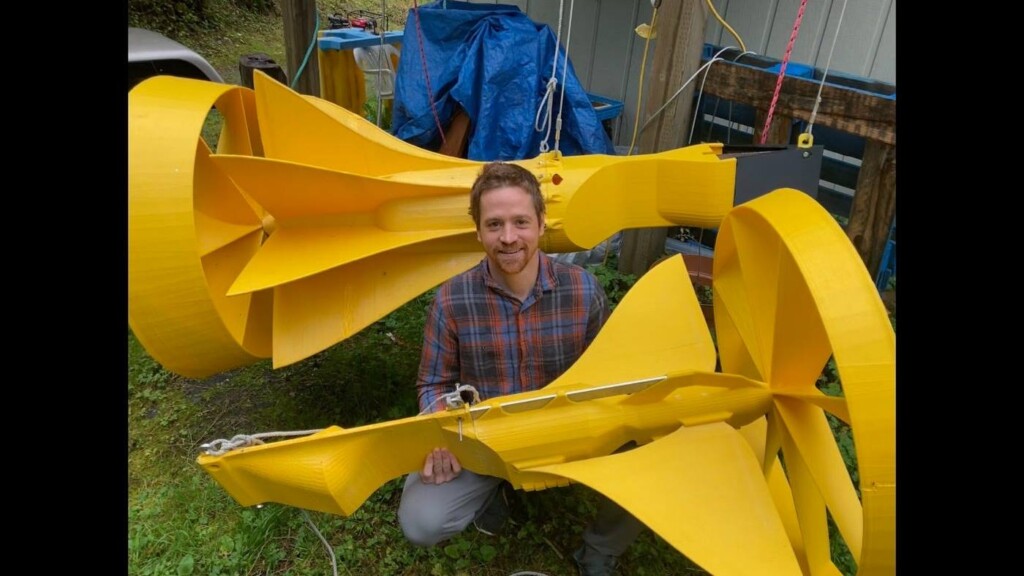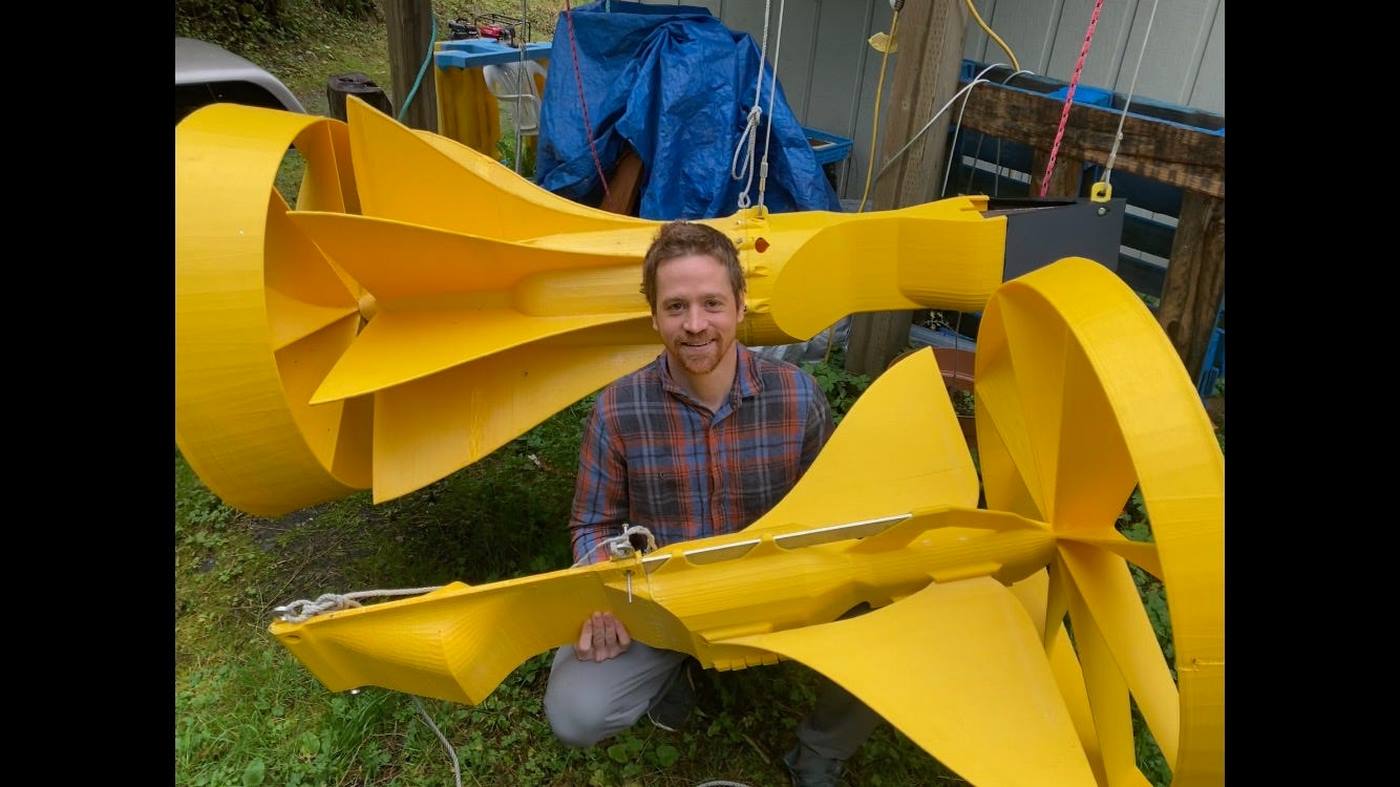
An awesome inventor in Juneau has created a simple way to decarbonize small vessels and houseboats using tidal power, a relatively under-exploited form of renewable energy.
The device can deliver 1.6 kilowatts of power from the movement of the tides and is as easy to use as dropping an anchor.
Lance McMullan, pictured here with a 3D-printed prototype of his invention from last August, launched a startup called Sitkana which last year managed to cobble together $90,000 in seed money.
Now, their first full-scale prototype, the Chinook 3.0 portable tidal power device, has been tested and found to deliver fluctuating power levels as high as 1.6 kilowatts. The design is intended for live-a-board vessels, houseboats, and small fishing vessels to power everything on board apart from the motor when it’s time to drop anchor.
A Texas native, McMullan has been focused on developing the state’s tidal power capacity for years. Ranged by countless steep fjords and inlets, the geographical chokepoint at the entrance to these tiny bays amplifies the natural power of the tides in the same way that the narrowing of a river increases the speed of the water flow.
McMullan’s Chinook works in essentially the same way as a wind turbine. The kinetic energy of the wind turns a rotor which generates electricity from this motion, but because water is much denser than air, this effect is actually amplified, and because tides are perfectly consistent and can be harvested for energy from the force of their retreat and their advance, tidal energy as a whole is more effective than wind.
A HUGE TIDAL POWER PROJECT: Liverpool is Building the World’s Largest Tidal Power Plant to Power a Million Homes
The Chinook takes advantage of these forces and exploits them thanks to modern developments in 3D printing that allow Sitkana to make low-cost tidal power generators for small boats. Weighing about 100 pounds, they’re far easier to bring aboard than a diesel generator.
A much larger version called the Orca is designed for coastal households and can generate 3.6 kilowatts, while a smaller version that generates 20 watts is soon to be available for sailboats.
WATCH the first test video below…
SHARE This Excellent Way To Decarbonize Boating With Your Friends…





















Someone needs to tell them that power generated during engine propulsion is actually a net loss. I see the potential of this idea. Anchoring and letting the ocean currents run this device would be great for electric powered watercraft willing to wait on the power generated, but this is not a “tidal” power generator, this is an ocean current generator.